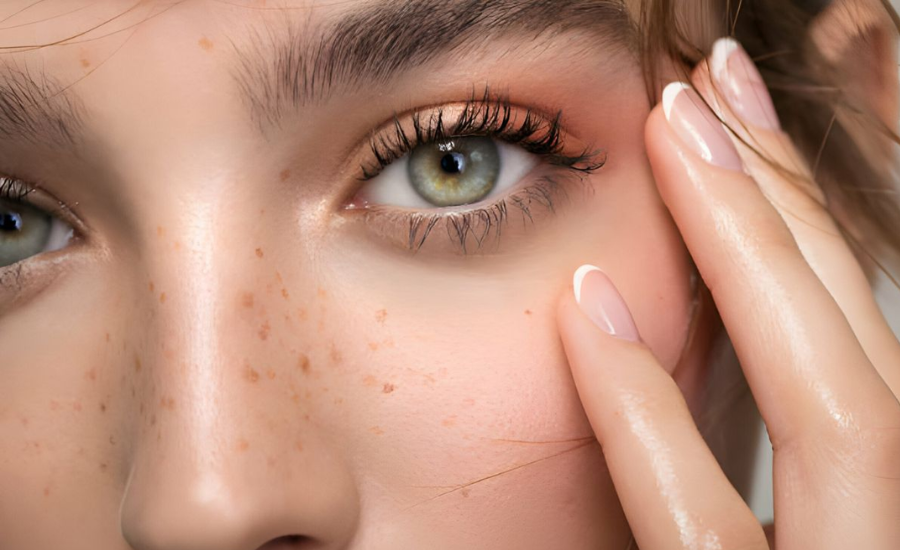Milialar skin disease, commonly known for the formation of small, benign cysts or bumps on the skin, is a condition that can affect people of all ages. These tiny bumps, often white or yellow, form when dead skin cells become trapped beneath the skin’s surface. Milia, as these cysts are called, are most commonly found on the face but can appear elsewhere on the body as well. Though generally harmless and painless, milia can sometimes cause cosmetic concerns, prompting individuals to seek treatment or preventive measures. In this article, we’ll explore the causes, symptoms, and various methods for managing and preventing milialar skin disease.
What Is Milialar Skin Disease?
Milialar, often confused with milia, refers to the condition where small keratin-filled cysts develop on the skin. These bumps can appear anywhere on the body but are most commonly found around the eyes, nose, cheeks, and chin. Milialar cysts are typically painless, but for some people, they may be a cosmetic issue that warrants treatment.
Milia are typically categorized into three different types: primary, secondary, and neonatal milia. Each type has its own characteristics and potential causes, but they all share the same basic mechanism: the entrapment of keratin beneath the skin surface.
Types Of Milialar Skin Disease
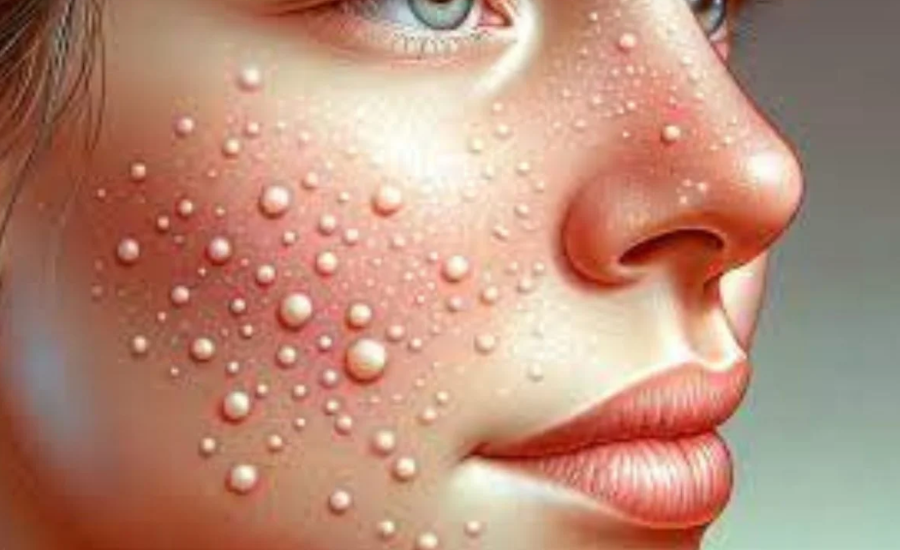
Primary Milia: This is the most common type of milia and is often genetic in nature. It occurs when dead skin cells get trapped in sweat ducts. Primary milia is common in newborns but can also occur in adults, especially in areas like the eyes, cheeks, and forehead. These cysts typically resolve on their own in a few weeks, but adults may need medical treatment if they persist.
Secondary Milia: Secondary milia typically occurs after trauma to the skin, such as burns, skin grafts, or dermabrasion. It can also be caused by the use of steroid creams for conditions like eczema or psoriasis. These milia usually clear up after the underlying condition heals, but in some cases, professional treatment may be needed to remove them.
Neonatal Milia: Neonatal milia is common in newborns and occurs shortly after birth. These small white bumps appear on the baby’s face and usually disappear without medical intervention within a few weeks. They are entirely harmless and do not require treatment.
What Causes Milialar Skin Disease?
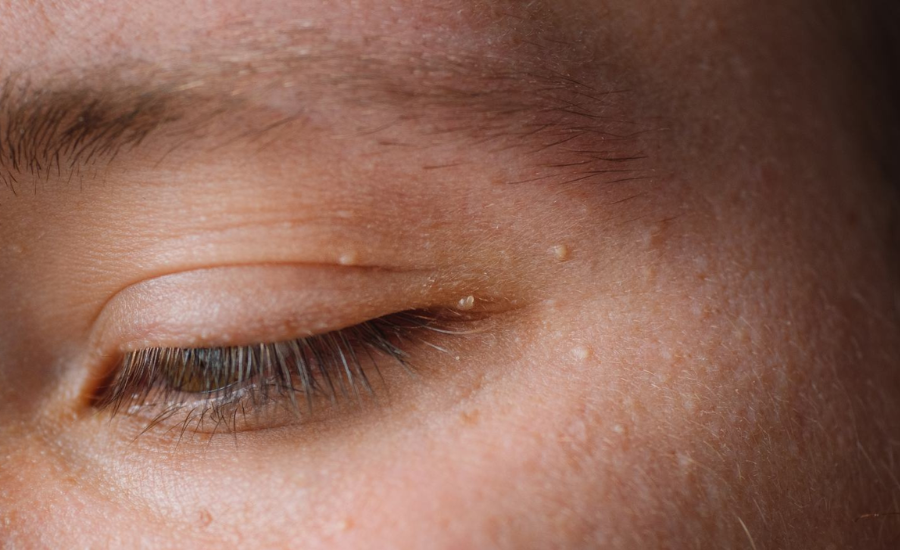
Several factors can contribute to the development of milialar skin disease. Understanding these causes can help you take steps to prevent or minimize their occurrence.
- Genetics: A family history of milia may increase your chances of developing milialar skin disease. If a parent or sibling has had milia, there’s a higher likelihood that you may experience it as well.
- Dry Skin: Skin that is chronically dry is less able to shed dead skin cells effectively. This can lead to the accumulation of keratin under the skin’s surface, which forms milia. Using a good moisturizer can help prevent this by maintaining skin hydration.
- Harsh Skin Care Products: Overuse of strong exfoliants or chemical skincare products can damage the skin’s protective barrier. This can cause dead skin cells to become trapped beneath the surface, leading to milia. Opting for gentler skincare products can help reduce the risk.
- Excessive Sun Exposure: Prolonged exposure to UV rays can damage the skin, increasing the production of keratin and contributing to milia formation. Protecting your skin with a broad-spectrum sunscreen can prevent further damage and reduce the chances of developing milialar cysts.
- Certain Medications: Some medications, especially topical steroid creams, can cause milia as a side effect. If you suspect your medication is causing milia, consult with your doctor to explore alternative treatments.
Symptoms Of Milialar Skin Disease
The primary symptom of milialar skin disease is the appearance of small, white or yellowish bumps on the skin. These cysts are typically around 1 to 2 millimeters in diameter and are filled with keratin. They are most commonly found around the eyes, nose, and cheeks but can appear anywhere on the body. Although they are usually painless, they can be cosmetically bothersome for some individuals.
Treatment Options For Milialar Skin Disease
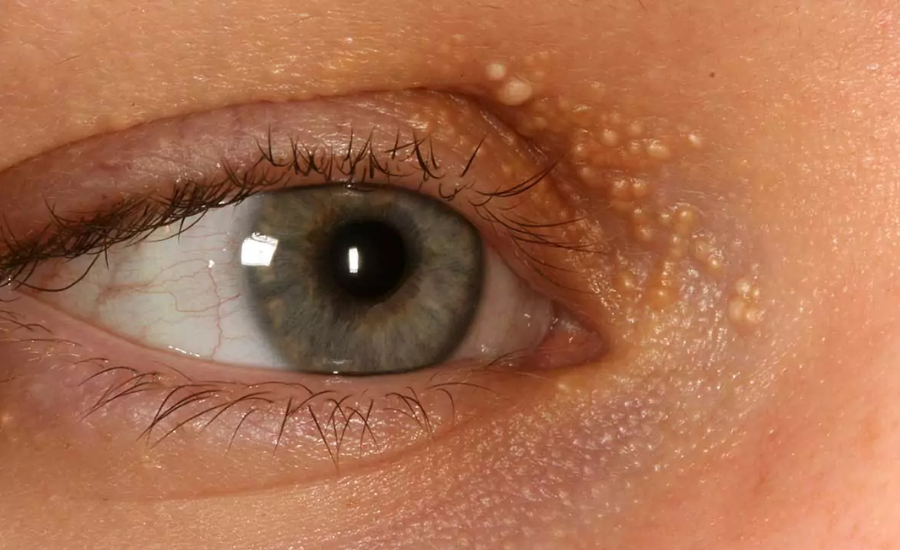
While milia are generally harmless and often resolve on their own, treatment may be sought for cosmetic reasons or if the cysts persist. Here are some of the most effective treatment options:
- Topical Retinoids: Retinoid creams, available over-the-counter or by prescription, can help accelerate the skin’s natural exfoliation process, preventing dead skin cells from becoming trapped and forming milia. These creams are especially effective when used consistently.
- Exfoliation: Gently exfoliating your skin can help remove the build-up of dead skin cells. However, it’s important to avoid overly harsh exfoliants, which can damage the skin. Choose gentle scrubs or exfoliating cleansers suited for your skin type.
- Professional Extraction: For persistent or bothersome milia, a dermatologist can perform a safe extraction procedure. Using sterilized needles or scalpels, the dermatologist can gently open the cysts and remove the trapped keratin. This procedure should only be done by a professional to avoid infection or scarring.
- Laser Therapy: In some cases, laser treatments may be used to target and remove milialar cysts. This non-invasive method can provide long-lasting results and is particularly effective for individuals with recurrent milia.
- Chemical Peels: Chemical peels use mild acids to exfoliate the outer layers of the skin, promoting the shedding of dead skin cells. This can help prevent milia from forming and also improve skin texture.
- Microdermabrasion: This non-invasive procedure uses fine crystals to gently exfoliate the skin’s surface. It can help remove dead skin cells and reduce the risk of milia developing.
Preventing Milialar Skin Disease
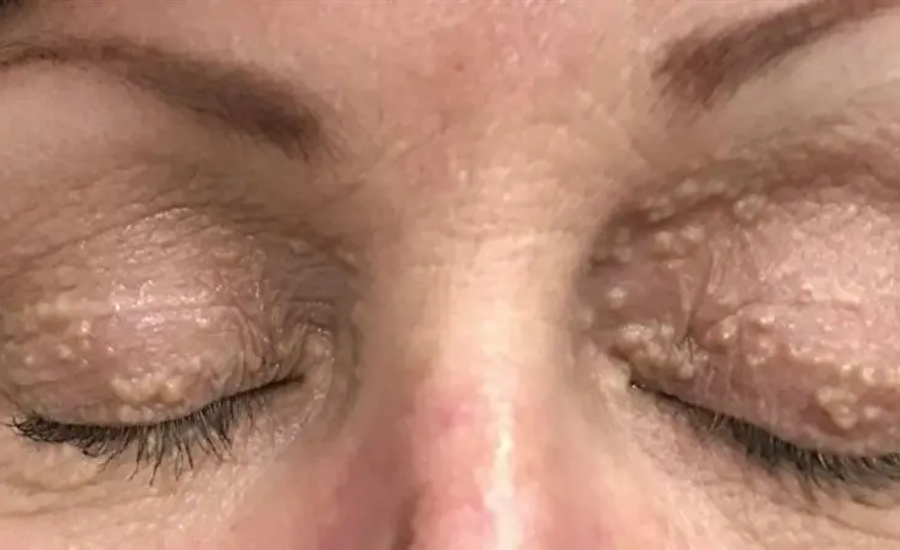
Preventing milialar skin disease involves a combination of good skincare habits and protective measures. Here are some tips to help you avoid the development of milia:
- Use Non-Comedogenic Products: Choose skincare products that are labeled as non-comedogenic, meaning they won’t clog your pores or hair follicles. This is especially important for individuals with oily or acne-prone skin.
- Protect Your Skin from the Sun: Always apply a broad-spectrum sunscreen with SPF 30 or higher to protect your skin from harmful UV rays. Sun exposure is a significant factor in the development of milialar.
- Gentle Cleansing: Cleanse your skin with a mild, hydrating cleanser to avoid stripping away natural oils. Harsh soaps can dry out the skin and increase the risk of milia.
- Avoid Heavy Oils: Heavy oils or greasy skincare products can clog pores and increase the likelihood of milia. Opt for lighter oils or oil-free products, especially around the delicate areas like the eyes.
- Regular Exfoliation: Gentle exfoliation can help prevent the build-up of dead skin cells. However, avoid over-exfoliating, as this can irritate the skin and potentially worsen the condition.
Conclusion
While milialar skin disease is generally a benign condition, it can be bothersome for those affected by it. By understanding the causes, symptoms, and effective treatment options, you can take steps to manage and prevent the formation of milia. Whether through gentle skincare practices, professional treatments, or preventive measures like sun protection, there are several ways to keep your skin clear and healthy. If you are concerned about persistent milia, consulting a dermatologist is always a good idea to determine the best course of action for your skin.
FAQs About Milialar Skin Disease
1. What is Milialar Skin Disease?
Milialar skin disease refers to the formation of small, benign cysts or bumps on the skin caused by the entrapment of keratin beneath the skin’s surface. These bumps, called milia, are most commonly found on the face, especially around the eyes, nose, and cheeks.
2. What causes Milialar Skin Disease?
Milialar skin disease is caused by the trapping of dead skin cells or keratin beneath the skin’s surface. Factors that contribute to this include genetics, dry skin, harsh skin care products, excessive sun exposure, and certain medications like topical steroids.
3. How can I prevent Milialar Skin Disease?
To prevent milia, use non-comedogenic skin care products, avoid excessive sun exposure by wearing sunscreen, cleanse your skin gently, and exfoliate regularly to remove dead skin cells. Additionally, avoiding harsh skincare products and heavy oils can help reduce the risk.
4. What are the types of Milialar Skin Disease?
There are three main types of milialar skin disease:
- Primary Milia: Often genetic and common in newborns, it occurs when dead skin cells become trapped in sweat ducts.
- Secondary Milia: Develops after skin trauma such as burns or skin grafts, or due to steroid cream use.
- Neonatal Milia: Found in newborns, it usually clears up on its own without treatment.
5. Are Milialar cysts painful?
Milia are typically painless. However, they can be cosmetically bothersome for some individuals, especially if they are located on the face.
Read Next : Thenews Face
